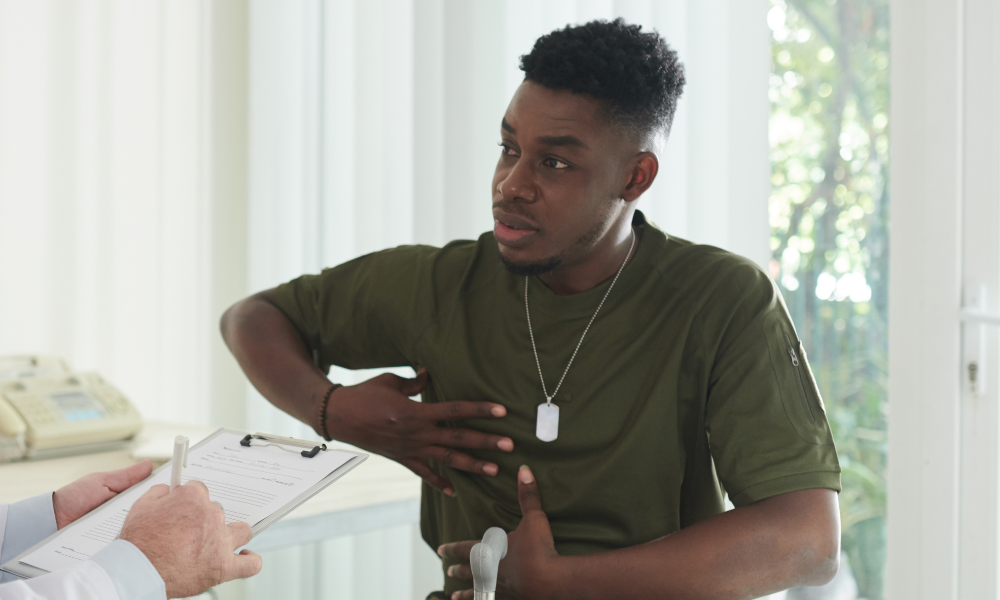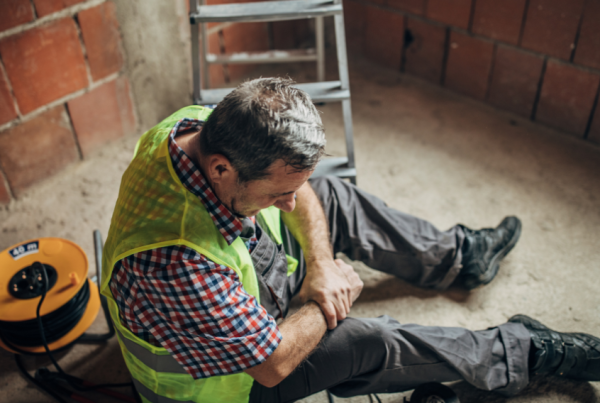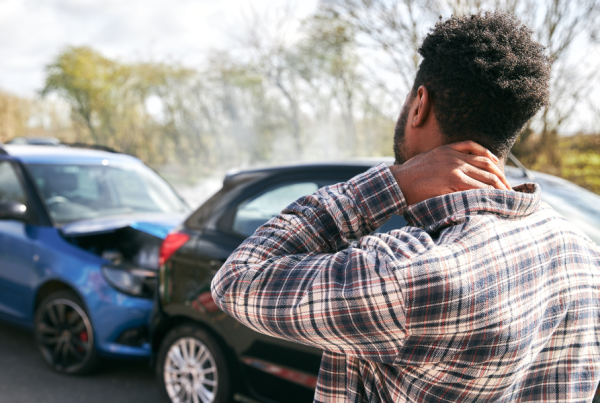Rib Pain
Move Better. Live Fuller. Your Wellness Journey Starts Here.
Schedule a FREE Discovery Call!
About Rib Pain
The ribs are an incredibly important part of the body, protecting vital organs such as the heart and lungs, and providing space for the lungs to expand. The rib bones are some of the strongest in the body, but that doesn’t mean that things can’t go wrong with them. In fact, rib pain is actually pretty common, but can vary widely.
Some symptoms related to problems with the ribs include:
- Mild to severe pain in the general rib area
- Sharp, stabbing pain that occurs with movement
- Pain that occurs with sneezing, coughing, or laughing
- Pain with movements such as twisting, lifting, or bending
- In some cases, rib pain can cause difficulty breathing
- Swelling or bruising, particularly with injuries and fractures
- Tightness in the chest due to muscle strain or rib inflammation
- With fracture or dislocation, there may be popping or cracking sounds with movement
- Numbness or tingling associated with nerve compression

What Causes Rib Pain?
A variety of factors can cause rib pain. Although the term “rib pain” is a very general term, there are some conditions that refer to more specific types of rib pain, such as the following:
- Costalgia: Inflammation of the muscles between the ribs that causes chest pain.
- Costochondritis: A condition characterized by inflammation of the cartilage that connects the ribs to the sternum.
- Musculoskeletal chest pain: Pain felt in the chest can be caused by many factors, including issues with the ribs.
- Costovertebral pain: The costovertebral joints are what connect the ribs to the vertebral column (spinal column). This sort of pain is felt in the upper to mid back.
- Intercostal neuralgia: The intercostal nerves are located throughout the rib cage and abdomen. Inflammation, injury, or other problems with these nerves can cause sharp, shooting pain with movement.
- Bruised or fractured rib: Injured ribs can make it difficult to move, with tenderness and pain that may worsen with movement or with coughing, sneezing, or laughing.
- Thoracic pain: The thoracic region is the upper to middle area of the back. Because the thoracic spine and ribs are connected, rib pain can be related to pain originating from the thoracic region.
- Pulled muscles: Pulled muscles can cause chest pain and discomfort, especially those of the intercostal muscles, which attach to the ribs.
Physical Therapy for Rib Pain
Physical therapy can be an effective form of management for rib pain. In some cases, rib pain can indicate a more serious issue or injury—in that case, the physical therapist can refer the patient to another healthcare professional as necessary. In non-emergency cases, a physical therapist can relieve muscle spasms, tightness, and pain with various safe and effective treatments.
In terms of injuries such as fractures or bruising, a physical therapist can assist with rehabilitation. Although rib injuries take time to heal and some level of rest is expected, being immobile for too long can worsen your situation. This is because lack of movement and fear of moving will create more issues with protective postures and tightened muscles. With the help of a professional, you can slowly return to safe amounts of movement at a level of difficulty that follows your rate of healing.
In other cases where pain is caused by other conditions, such as costovertebral pain or intercostal muscle issues, a physical therapist can reduce your pain by improving the strength and flexibility of surrounding areas. They will use treatments and prescribe exercises to improve your mobility, reduce pain, and minimize muscle spasms in the area of concern. This can involve manual therapy, stretching, exercises, joint manipulation, and pain relief treatments such as dry needling.
Additionally, your physical therapist will be able to teach you proper posture and form. Poor posture can affect your ribs, worsen your condition, and put you more at risk for future injury. Having poor posture can prevent your ribs from functioning properly—making it more difficult to breathe, move, bend, or twist.
Whether you sit at a desk all day, do a lot of lifting, or play sports regularly, your physical therapist can help you understand optimal form—which will prevent future injuries and put less strain on any current conditions.
Although the causes of rib pain can vary widely, our physical therapists at Hive Therapy and Wellness are experts in the anatomy of the body, including the musculoskeletal system. They’ll be able to accurately find the root cause of your pain and address your unique condition in order to provide relief. Your Hive physical therapist will work closely with you to understand your needs, and create an individualized plan of care to address those needs. Some common treatments utilized at Hive for rib pain include:
- Dry needling
- Cupping
- Manual therapy
- Spinal manipulation
- Electrical muscle stimulation
- Tissue scraping
- Exercise prescription
- Behavioral modifications
- Therapeutic modalities
- Neuromuscular re-education
- Biofeedback
- Therapeutic activity
The ribs are an incredibly important part of the body, protecting vital organs such as the heart and lungs, and providing space for the lungs to expand.
The rib bones are some of the strongest in the body, but that doesn’t mean that things can’t go wrong with them. In fact, rib pain is actually pretty common, but can vary widely.
Some symptoms related to problems with the ribs include:
- Mild to severe pain in the general rib area
- Sharp, stabbing pain that occurs with movement
- Pain that occurs with sneezing, coughing, or laughing
- Pain with movements such as twisting, lifting, or bending
- In some cases, rib pain can cause difficulty breathing
- Swelling or bruising, particularly with injuries and fractures
- Tightness in the chest due to muscle strain or rib inflammation
- With fracture or dislocation, there may be popping or cracking sounds with movement
- Numbness or tingling associated with nerve compression
A variety of factors can cause rib pain. Although the term “rib pain” is a very general term, there are some conditions that refer to more specific types of rib pain, such as the following:
- Costalgia: Inflammation of the muscles between the ribs that causes chest pain.
- Costochondritis: A condition characterized by inflammation of the cartilage that connects the ribs to the sternum.
- Musculoskeletal chest pain: Pain felt in the chest can be caused by many factors, including issues with the ribs.
- Costovertebral pain: The costovertebral joints are what connect the ribs to the vertebral column (spinal column). This sort of pain is felt in the upper to mid back.
- Intercostal neuralgia: The intercostal nerves are located throughout the rib cage and abdomen. Inflammation, injury, or other problems with these nerves can cause sharp, shooting pain with movement.
- Bruised or fractured rib: Injured ribs can make it difficult to move, with tenderness and pain that may worsen with movement or with coughing, sneezing, or laughing.
- Thoracic pain: The thoracic region is the upper to middle area of the back. Because the thoracic spine and ribs are connected, rib pain can be related to pain originating from the thoracic region.
- Pulled muscles: Pulled muscles can cause chest pain and discomfort, especially those of the intercostal muscles, which attach to the ribs.
Physical therapy can be an effective form of management for rib pain. In some cases, rib pain can indicate a more serious issue or injury—in that case, the physical therapist can refer the patient to another healthcare professional as necessary.
In non-emergency cases, a physical therapist can relieve muscle spasms, tightness, and pain with various safe and effective treatments.
In terms of injuries such as fractures or bruising, a physical therapist can assist with rehabilitation. Although rib injuries take time to heal and some level of rest is expected, being immobile for too long can worsen your situation.
This is because lack of movement and fear of moving will create more issues with protective postures and tightened muscles. With the help of a professional, you can slowly return to safe amounts of movement at a level of difficulty that follows your rate of healing.
In other cases where pain is caused by other conditions, such as costovertebral pain or intercostal muscle issues, a physical therapist can reduce your pain by improving the strength and flexibility of surrounding areas.
They will use treatments and prescribe exercises to improve your mobility, reduce pain, and minimize muscle spasms in the area of concern. This can involve manual therapy, stretching, exercises, joint manipulation, and pain relief treatments such as dry needling.
Additionally, your physical therapist will be able to teach you proper posture and form. Poor posture can affect your ribs, worsen your condition, and put you more at risk for future injury. Having poor posture can prevent your ribs from functioning properly—making it more difficult to breathe, move, bend, or twist.
Whether you sit at a desk all day, do a lot of lifting, or play sports regularly, your physical therapist can help you understand optimal form—which will prevent future injuries and put less strain on any current conditions.
Although the causes of rib pain can vary widely, our physical therapists at Hive Therapy and Wellness are experts in the anatomy of the body, including the musculoskeletal system. They’ll be able to accurately find the root cause of your pain and address your unique condition in order to provide relief.
Your Hive physical therapist will work closely with you to understand your needs, and create an individualized plan of care to address those needs. Some common treatments utilized at Hive for rib pain include:
- Dry needling
- Cupping
- Manual therapy
- Spinal manipulation
- Electrical muscle stimulation
- Tissue scraping
- Exercise prescription
- Behavioral modifications
- Therapeutic modalities
- Neuromuscular re-education
- Biofeedback
- Therapeutic activity
You can learn more about these treatments on our Treatments Page.





